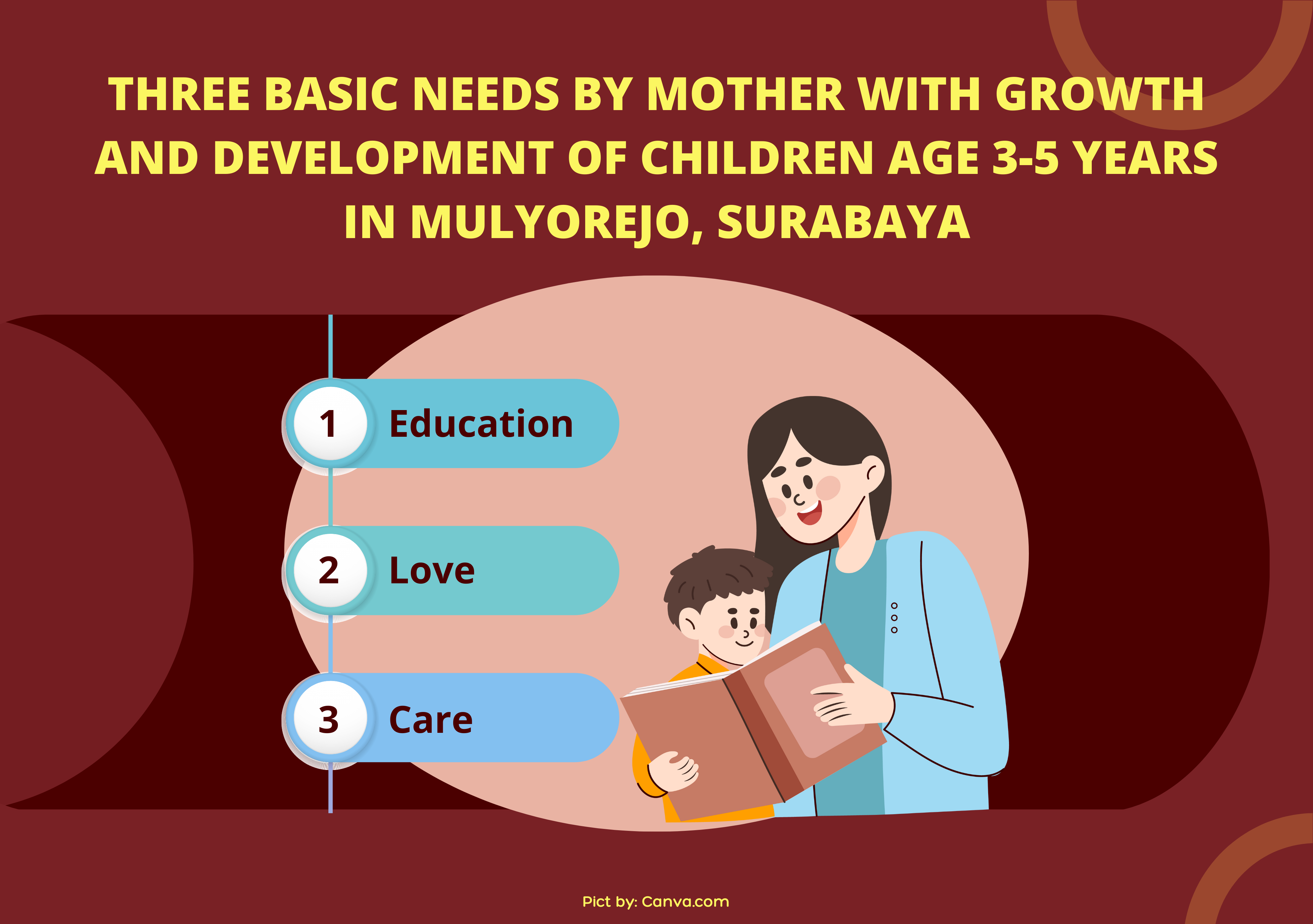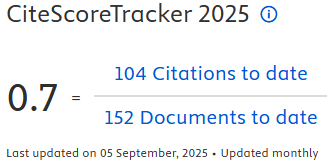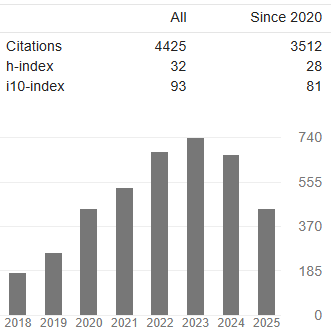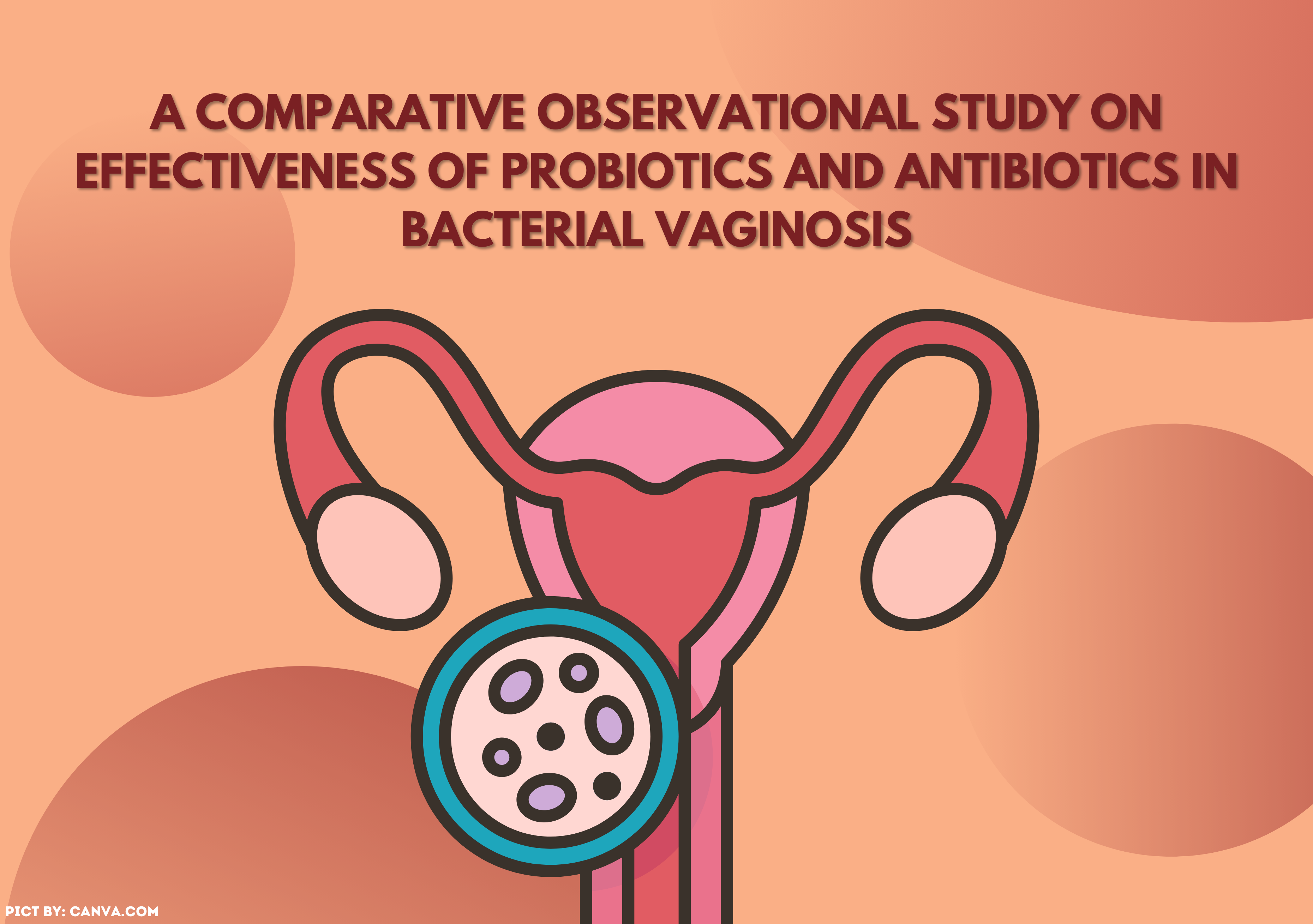RELATIONSHIP OF THREE BASIC NEEDS BY MOTHER WITH GROWTH AND DEVELOPMENT OF CHILDREN AGE 3-5 YEARS IN MULYOREJO, SURABAYA

Introduction: Fulfilling the basic needs of children (education, love and care) can influence the growth and development of children in a positive direction. This study was aimed to analyze the relationship between the patterns of education, love, and care given by mothers with the growth and development of children at 3-5 years in the Mulyorejo Sub-District, Surabaya. Method: This study was cross-sectional design with 72 children aged 3-5 years old as sample and selected using simple random sampling. The data were collected from primary sources by interviewing mothers of children about her knowledge and the pattern of education, love, and care, measuring children's anthropometry and interviewing Pre-Screening Questionnaire Test with children. The data were analyzed using the Spearman correlation test. Result: showed there was no relationship between education pattern (p = 0.122) and love pattern (p = 0.56) with child development. There was a correlation between consumption pattern (as a care pattern) of animal side dish with weight for age (p = 0.041; OR = -0.242), fruit consumption with weight for age (p = 0.010; OR = -0.301), and fruit consumption with weight for height (p = 0.025; OR = -0.264). Conclusion: Although there is no relationship between education and love patterns with child development, in the care pattern, the consumption pattern of animal and fruit side dishes is proven to be related to the growth of children.
Aboud, F. E. and Akhter, S. (2011) "A Cluster-Randomized Evaluation of a Responsive Stimulation and Feeding Intervention in Bangladesh,” Pediatrics, 127(5), p. e1191 LP-e1197. https://doi.org/10.1542/peds.2010-2160
Abuya, B. A., Ciera, J. and Kimani-Murage, E. (2012) "Effect of mother's education on child's nutritional status in the slums of Nairobi,” BMC Pediatrics, 12(1), p. 80. https://doi.org/10.1186/1471-2431-12-80
Adriani, M. and Maria, F. N. (2009) "Hubungan Pola Asuh, Asih, Asah dengan Tumbuh Kembang Balita Usia 1€-3 Tahun,” Indonesian Journal of Public Health, 6(1).
Altschul, I., Lee, S. J. and Gershoff, E. T. (2016) "Hugs, Not Hits: Warmth and Spanking as Predictors of Child Social Competence,” Journal of Marriage and Family. John Wiley & Sons, Ltd, 78(3), pp. 695–714. doi: https://doi.org/10.1111/jomf.12306
Ardhyati, Y. A. (2015) Hubungan Konsumsi Pangan Hewani dengan Status Gizi Anak SD Negeri Kudu 02 Kecamatan Baki Kabupaten Sukoharjo. Universitas Muhammadiyah Surakarta.
Arifah, N. (2013) The Correlation between Malnutritioned Under-Five Children's Development with their Basic Needs (Foster, Hone, and Compassion) Fullfillment in Sukojember Village,Jelbuk Sub-District, Jember. Jember University.
Arifah, N., Rahmawati, I. and Dewi, E. I. (2013) "Hubungan pemenuhan kebutuhan dasar balita (asuh, asah, dan asih) dengan perkembangan balita yang berstatus BGM (bawah garis merah) di Desa Sukojember Kecamatan Jelbuk Kabupaten Jember,” IKESMA, 9(2).
Baliwati, Y. F. (2005) Pengantar Pangan dan Gizi. Jakarta: Penebar Swadaya.
Barros, A. J. D., Matijasevich, A., Santos, I. S. and Halpern, R. (2010) "Child development in a birth cohort: effect of child stimulation is stronger in less educated mothers,” International Journal of Epidemiology, 39(1), pp. 285–294. https://doi.org/10.1093/ije/dyp272
Bathory, E. and Tomopoulos, S. (2017) "Sleep Regulation, Physiology and Development, Sleep Duration and Patterns, and Sleep Hygiene in Infants, Toddlers, and Preschool-Age Children,” Current Problems in Pediatric and Adolescent Health Care, 47(2), pp. 29–42. https://doi.org/10.1016/j.cppeds.2016.12.001
Bekelman, T. A., Bellows, L. L. and Johnson, S. L. (2017) "Are Family Routines Modifiable Determinants of Preschool Children's Eating, Dietary Intake, and Growth? A Review of Intervention Studies,” Current Nutrition Reports, 6(2), pp. 171–189. https://doi.org/10.1007/s13668-017-0207-9
Cahyanti, C. N. and Zulaikha, F. (2020) "Hubungan Pengetahuan Orang Tua, Pola Asuh dan Status Gizi dengan Perkembangan Bahasa Anak Usia Prasekolah di PAUD Kota Samarinda,” Borneo Student Research (BSR), 1(3), pp. 2216–2223. https://doi.org/10.35913/jk.v3i2.182
Central Bureau of Statistics (2016) Kota Surabaya Dalam Angka 2016. Surabaya: Central Bureau of Statistics.
Damayanti, T., Murbawani, E. A. and Fitranti, D. Y. (2018) "Hubungan Usia Pengenalan Sayur Dan Buah Dengan Tingkat Konsumsi Sayur Dan Buah Pada Anak Prasekolah Usia 3-5 Tahun,” Journal of Nutrition College. Departemen Ilmu Gizi, Fakultas Kedokteran, Universitas Diponegoro, 7(1), pp. 1–7. https://doi.org/10.14710/jnc.v7i1.20770
Demment, M. M., Haas, J. D. and Olson, C. M. (2014) "Changes in family income status and the development of overweight and obesity from 2 to 15 years: a longitudinal study,” BMC Public Health, 14(1), p. 417. https://doi.org/10.1186/1471-2458-14-417
Department of Health (2010) "Stimulasi, deteksi dan intervensi dini tumbuh kembang anak (sosialisasi buku pedoman pelaksanaan DDTK di tingkat pelayanan kesehatan dasar).” Jakarta: Department of Health.
Dessie, Z. B., Fentie, M., Abebe, Z., Ayele, T. A. and Muchie, K. F. (2019) "Maternal characteristics and nutritional status among 6–59 months of children in Ethiopia: further analysis of demographic and health survey,” BMC pediatrics. Springer, 19(1), p. 83. https://doi.org/10.1186/s12887-019-1459-x
Fristi, W., Indriati, G. and Erwin (2014) "Perbandingan Tumbuh Kembang Anak Toddler yang Diasuh Orang Tua dengan Diasuh Selain Orang Tua,” Jurnal Online Mahasiswa Program Studi Ilmu Keperawatan Universitas Riau, 1(2), pp. 1–8.
Gentzler, A. L., Ramsey, M. A. and Black, K. R. (2015) "Mothers' attachment styles and their children's self-reported security, as related to maternal socialization of children's positive affect regulation,” Attachment & Human Development. Routledge, 17(4), pp. 376–398. https://doi.org/10.1080/14616734.2015.1055507
Gimenez-Nadal, J. I. and Molina, J. A. (2013) "Parents' education as a determinant of educational childcare time,” Journal of Population Economics, 26(2), pp. 719–749. https://doi.org/10.1007/s00148-012-0443-7
Hawa, V. V and Spanoudis, G. (2014) "Toddlers with delayed expressive language: An overview of the characteristics, risk factors and language outcomes,” Research in Developmental Disabilities, 35(2), pp. 400–407. doi: https://doi.org/10.1016/j.ridd.2013.10.027
Health Research and Development Agency (2018) Riset Kesehatan Dasar 2018. Jakarta.
Heckman, J. J. and Masterov, D. V (2007) "The Productivity Argument for Investing in Young Children,” Applied Economic Perspectives and Policy. John Wiley & Sons, Ltd, 29(3), pp. 446–493. https://doi.org/10.1111/j.1467-9353.2007.00359.x
Hidayah, W. (2010) Hubungan pola asih, asuh, dan asah dengan status gizi dan perkembangan balita di paud RW 11, 13, dan 14 Kelurahan Ujung. Universitas Airlangga.
Hidayat, A. (2007) Metode Penelitian Keperawatan dan Teknik Analisis Data. Jakarta: Salemba Medika.
Lestari, R. D. (2019) "Hubungan Pola Asah dengan Perkembangan Bahasa pada Bayi Usia 12–24 Bulan di Desa Poh Sarang Kecamatan Semen Kabupaten Kediri,” Jurnal Bidan Pintar, 1(1), pp. 11–16. https://doi.org/10.35451/jkk.v1i2.126
Matthew Liao, S. (2012) "Why children need to be loved,” Critical Review of International Social and Political Philosophy. Routledge, 15(3), pp. 347–358. https://doi.org/10.1080/13698230.2012.679422.
Milkie, M. A., Kendig, S. M., Nomaguchi, K. M. and Denny, K. E. (2010) "Time With Children, Children's Well-Being, and Work-Family Balance Among Employed Parents,” Journal of Marriage and Family. John Wiley & Sons, Ltd, 72(5), pp. 1329–1343. https://doi.org/10.1111/j.1741-3737.2010.00768.x.
Millward, D. J. (2017) "Nutrition, infection and stunting: the roles of deficiencies of individual nutrients and foods, and of inflammation, as determinants of reduced linear growth of children,” Nutrition research reviews. Cambridge University Press, 30(1), p. 50. https://doi.org/10.1017/S0954422416000238
Miranti, Z. and Purhadi, P. (2016) "Pemetaan Jumlah Balita Gizi Buruk di Kota Surabaya dengan GWNBR dan Flexibly Shaped Spatial Scan Statistic,” Jurnal Sains dan Seni ITS, 5(2).
Mitchell, G. L., Farrow, C., Haycraft, E. and Meyer, C. (2013) "Parental influences on children's eating behaviour and characteristics of successful parent-focussed interventions,” Appetite, 60, pp. 85–94. doi: https://doi.org/10.1016/j.appet.2012.09.014
Nepper, M. J. and Chai, W. (2017) "Parental Views of Promoting Fruit and Vegetable Intake Among Overweight Preschoolers and School-Aged Children,” Global Qualitative Nursing Research. SAGE Publications Inc, 4, p. 2333393617692085. https://doi.org/10.1177/2333393617692085
Noble, K. G., Houston, S. M., Brito, N. H., Bartsch, H., Kan, E., Kuperman, J. M., Akshoomoff, N., Amaral, D. G., Bloss, C. S., Libiger, O., Schork, N. J., Murray, S. S., Casey, B. J., Chang, L., Ernst, T. M., Frazier, J. A., Gruen, J. R., Kennedy, D. N., Van Zijl, P., Mostofsky, S., Kaufmann, W. E., Kenet, T., Dale, A. M., Jernigan, T. L. and Sowell, E. R. (2015) "Family income, parental education and brain structure in children and adolescents,” Nature Neuroscience, 18(5), pp. 773–778. https://doi.org/10.1038/nn.3983
Nurapriyanti, I., Sarwinanti and Satriandari, Y. (2016) Faktor – Faktor yang Mempengaruhi Status Gizi Balita di Posyandu Kunir Putih 13 Wilayah Kerja Puskesmas Umbulharjo I Kota Yogyakarta Tahun 2015. Universitas 'Aisyiyah Yogyakarta.
Probosiwi, H., Huriyati, E. and Ismail, D. (2017) "Stunting and development among 12-60 month aged children in Kalasan,” BKM Journal of Community Medicine and Public Health, 33(11), pp. 559–564. https://doi.org/10.22146/bkm.26550
Rachmi, C. N., Agho, K. E., Li, M. and Baur, L. A. (2016) "Stunting, Underweight and Overweight in Children Aged 2.0–4.9 Years in Indonesia: Prevalence Trends and Associated Risk Factors,” PLOS ONE. Public Library of Science, 11(5), p. e0154756. Available at: https://doi.org/10.1371/journal.pone.0154756
Robertson, R. C., Manges, A. R., Finlay, B. B. and Prendergast, A. J. (2019) "The Human Microbiome and Child Growth – First 1000 Days and Beyond,” Trends in Microbiology, 27(2), pp. 131–147. https://doi.org/10.1016/j.tim.2018.09.008
Ruauw, J., Rompas, S. and Gannika, L. (2019) "Stimulasi Motorik dengan Perkembangan Fisik pada Anak Usia 3-5 Tahun,” Jurnal Keperawatan, 7(2). https://doi.org/10.35790/jkp.v7i2.24470
Soedjatmiko (2009) Cara praktis Membentuk Anak Sehat, Tumbuh Kembang Optima, Kreatif, dan Cerdas Multipel. Jakarta: PT Kompas Media Nusantara.
Soetjiningsih and Ranuh, N. G. (2013) Tumbuh Kembang Anak Edisi 2. Jakarta: EGC.
Stevens, L. and Nelson, M. (2011) "The contribution of school meals and packed lunch to food consumption and nutrient intakes in UK primary school children from a low income population,” Journal of Human Nutrition and Dietetics. John Wiley & Sons, Ltd, 24(3), pp. 223–232. https://doi.org/10.1111/j.1365-277X.2010.01148.x
Suhardjo (2003) Berbagai Cara Pendidikan Gizi. Jakarta: Bumi Aksara.
Supariasa, I. D. N. (2012) Penilaian Status Gizi (Edisi Revisi). Jakarta: EGC.
Triandhini, R. R., Kinasih, A. and Sriwijayanti, A. (2018) "Konsumsi tinggi lauk hewani, rendah sayur dan rendah aktivitas fisik berhubungan dengan kejadian kelebihan berat badan pada anak sekolah dasar,” Jurnal Gizi Indonesia (The Indonesian Journal of Nutrition), 6(2), pp. 139–147. https://doi.org/10.14710/jgi.6.2.139-147
Wall, G. (2018) "‘Love builds brains': representations of attachment and children's brain development in parenting education material,” Sociology of Health & Illness. John Wiley & Sons, Ltd, 40(3), pp. 395–409. https://doi.org/10.1111/1467-9566.12632.
Wang, S., Melnyk, J. P., Tsao, R. and Marcone, M. F. (2011) "How natural dietary antioxidants in fruits, vegetables and legumes promote vascular health,” Food Research International, 44(1), pp. 14–22. https://doi.org/10.1016/j.foodres.2010.09.028
Wong, D. L. (2009) Buku Ajar Keperawatan Pediatrik. Jakarta: EGC.
World Health Organization (2017) Levels and Trends In Child Malnutrition, World Health Organization. Available at: https://www.who.int (Accessed: January 10, 2020).
Yogi, B. K. (2017) "Hubungan Pola Asuh Ibu dengan Status Gizi Balita di RW VI Kelurahan Manisrejo Kecamatan Taman Kota Madiun Tahun 2017.” STIKES Bhakti Husada Mulia.
Copyright (c) 2023 The Indonesian Journal of Public Health

This work is licensed under a Creative Commons Attribution-NonCommercial-ShareAlike 4.0 International License.
- The authors agree to transfer the transfer copyright of the article to The Indonesian Journal of Public Health effective if and when the paper is accepted for publication.
- Authors and other parties are bound to the Creative Commons Attribution-NonCommercial-ShareAlike 4.0 International License for the published articles, legal formal aspect of journal publication accessibility refers to Creative Commons Attribution-NonCommercial-ShareAlike 4.0 International License (CC BY-NC-SA), implies that:
- Attribution ” You must give appropriate credit, provide a link to the license, and indicate if changes were made. You may do so in any reasonable manner, but not in any way that suggests the licensor endorses you or your use.
- NonCommercial ” You may not use the material for commercial purposes.
- ShareAlike ” If you remix, transform, or build upon the material, you must distribute your contributions under the same license as the original.































